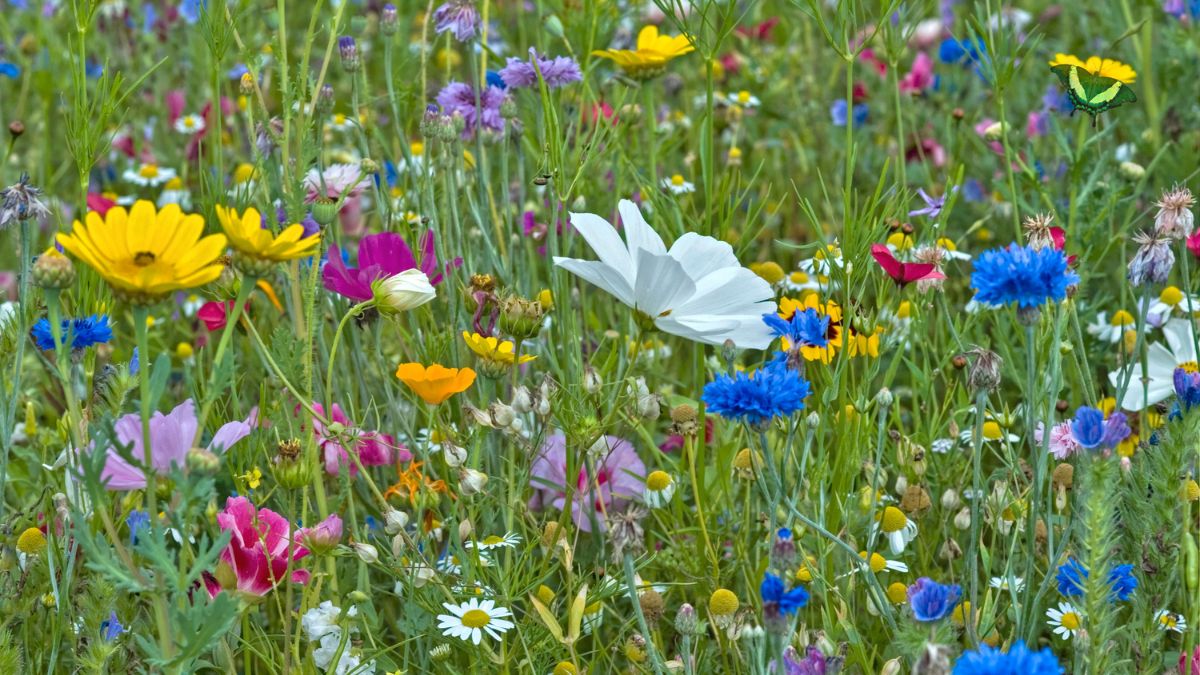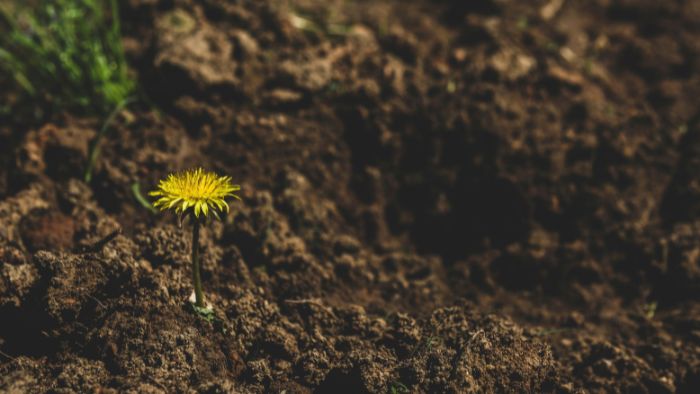The Best Soil for Wildflowers should have a lot of nutrients in order for it to be rich and healthy. Wildflowers come in many different shapes and colors and beautiful creatures are attracted to them because of their nectar. These flowers are stunning and enhance the look of any garden or landscape.
A wildflower is known to bloom in summer and spring in areas like mountains, prairies, and woodlands. There is usually no human aid or interaction involved in the process of them growing in these areas. Hence, these flowers are known as wildflowers.
When it comes to gardening, there are a lot of things that need to be considered. A seed does not just grow by throwing it onto the ground but needs to be nurtured and cared for especially when they’re planted out of its usual habitat. To grow a thriving garden filled with wildflowers, have a look at the information below before you start planting.
Things To Consider When Growing Wildflowers
When growing wildflowers, there are several things to take into consideration. The location of a flower is very important because most wildflowers need a small portion of shade but quite a lot of sun. A sensor to measure the light’s brightness during the day is most recommended. You will also need to use the best soil for wildflowers as it will afford you eye-catching blooms.
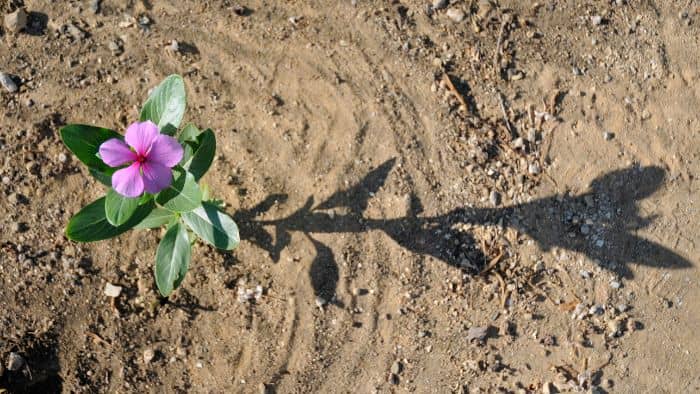
Be sure to acknowledge where the sunlight falls most and least in every area of your garden. This method can be used in any season, keeping in mind the shade caused by trees and walls on your property. It is always wonderful having a variety of wildflowers planted in your garden. However, be cautioned that not every kind will their best as it depends on the season and the climate of where it would naturally grow.
Know the flower you are planting, as you want to make sure that each one can flourish where you plant them. Be sure that the flowers do not invade each other and that you are checking on them, especially when weeds are known to grow and suffocate plants. When starting a wildflower garden, it is always best to look for the easiest flower that is sure to grow in your region. Perennial flowers or plants are ones that grow every year and would be best to invest in.
Flowers such as zinnias are easy to grow and long-lasting. In order to save time, it is always best to know whether you will plant on a raised bed or in containers. Having the soil ready and prepared for planting as spring hits is one way to use your time effectively. Be sure that you tend to the needs of the soil with mulch, compost, cardboard, and other household materials that will help enrich it.
What Is The Best Soil For Wildflowers?
The best soil for wildflowers is one that has low nutrients and is finely tilted. Normally, good quality soil is needed for a thriving garden but in this case, it is the opposite. The poorer the soil is the better for the wildflowers to flourish.
Mowing the area before planting is recommended. You need to remove any weeds, surface debris, and grass that is dead as this is critical for your wildflower garden. When this is done, you may plant the seed of the flower you want to grow.
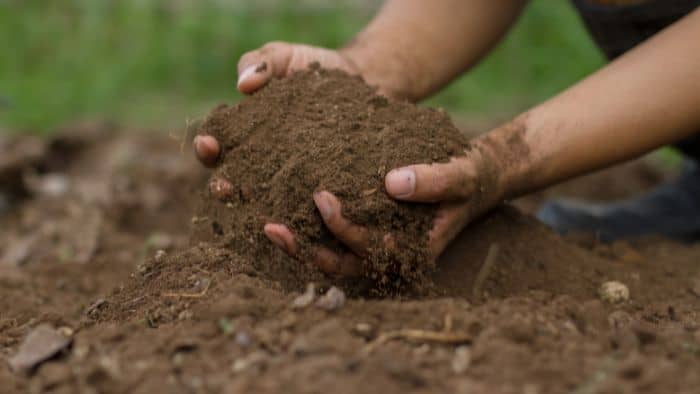
A well-draining soil is needed for these plants and the best way to achieve this is by combining a lot of sand and some garden soil. Wildflowers also need a small portion of shade and at least 6 hours of sunlight that hits directly on them each day.
What Are The Different Varieties Of Wildflowers
The Rudbeckia Hirta and the Gloriosa Daisy are wildflowers that are perennial and bi-colored. These varieties need more shade than sunlight and are similar to the black-eyed Susans plants.
They are able to withstand diseases and insect infestations because of their hardiness. There are more than 20 different perennial wildflower varieties and below are a few examples.
Varieties:
- Bee balm – This variety attracts hummingbirds, bees, and butterflies and is native to North America.
- Bellflower – Boasting attractive green foliage, this hardy flower makes the perfect growing cover.
- Lady’s Bedstraw – These bright yellow flowering buds grow in clusters and are very common plants in Ireland.
- Lance Leaf Coreopsis – This attractive flower is native to Canada, USA, and Mexico.
- Sweet William Catchfly – This wildflower gets its name because of the sap it oozes from damaged stems. The sap is known to entrap insects that try to invade it.
- Meadow Cranesbill – With lobbed foliage and hairy stems, this wildflower is native to European countries in the North.
- Poppy – These scarlet-bloomed wildflowers are eye-catching and grow best from June to August.
- Purple coneflower – These perennials belong to the Aster family and are native to the US.
- Queen Anne’s Lace – These little white flowers bloom in the summer season and belong to the carrot family.
These are some of the most familiar wildflowers but the black-eyed Susan is the most common, especially in America. They grow every year and bloom mostly in the fall and summer.
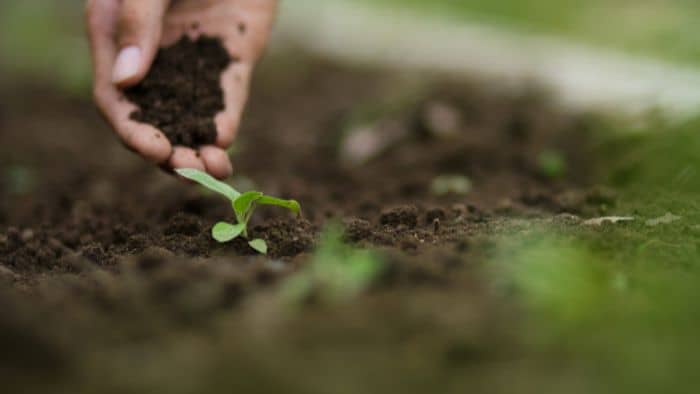
Wildflower Planting Tips
The fall season is when insects may find the seeds that you planted and eat them. Keep in mind that the soil should be slightly damp but well-draining at the same time. It should take up to 3 weeks for it to produce.
Tips:
- Location – Be sure that your plant gets enough sun and shade as recommended above.
- Preparation – Remember to mow the area that you will use to plant and be sure to remove any weeds or vegetation from it. Also, remove any rich compost or soil that is rich in organic matter as wildflowers don’t grow well in them. Thereafter, you can dig up a hole that is at least 15cm deep before planting.
- Soil – A mixture of sand and some garden soil is good for wildflowers. It should have drainage but not free flow drainage as it should retain some water.
- Planting – You should plant the seed straight into the ground and cover it lightly with the soil mix.
- Overall – Be sure to check for weeds and to maintain them during the pruning season. Also, water your plants often during the summer.
If you need more information on how to plant a wildflower check out part one in this video.
Conclusion
It is important to maintain your garden, although a wildflower garden does not demand extensive maintenance. Weeds are a nuisance and can kill your flower if you are not cautious in the first and second years of its growth.
Although most wildflowers are drought-tolerant, watering them during the dry summer season is recommended. This is to help them grow their best and maintain their luscious blooms. Maintaining any garden is important to keep your plants healthy and happy. Growing them in the best soil will also ensure that they are not planted in a very rich environment.
Wildflowers grow fast and can spread easily. However, you should ensure that you don’t have flowers growing where you did not plant them if you aim to keep your landscape orderly. It is also important to prune and cut off the seed heads that are not wanted.
Click on this link to learn how to sow wildflowers.
FAQs
[rank_math_rich_snippet id=”s-10a91c1f-6ae9-4725-a54a-ebf3932986a3″]

